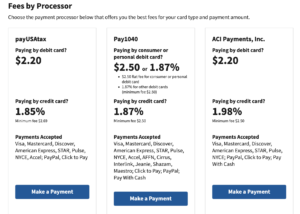Points and miles enthusiasts know that earning and keeping an excellent credit score is an essential part of a successful, ongoing credit card rewards strategy. Good credit is key if you want to be in the best position possible to qualify for future sign-up bonuses, premium credit cards and more.
One smart way to protect your credit scores (and avoid wasting money on expensive interest charges) is to pay off your credit card balances during the grace period every month. This good habit may help you maintain a lower credit utilization rate—especially if you consistently pay off each card balance before its statement closing date. In fact, paying your full credit card balance is so important, it’s one of TPG’s 10 commandments of credit card rewards.
What’s changing?
An October 2022 announcement by the Federal Housing Finance Agency (FHFA) has made it more essential for consumers to pay their credit cards in full each month. In an effort to modernize the credit score models mortgage lenders use during the home financing process, Fannie Mae and Freddie Mac will begin using new credit scores: FICO 10T and VantageScore 4.0.
What’s interesting about FICO 10T and VantageScore 4.0 is that both credit score models consider trended data. Trended data takes a closer look at how you have managed your credit card payments over the past 24 months—including whether you’ve routinely paid them in full or revolved a balance.
If you’re someone who habitually keeps a balance on your credit cards from month to month, your credit score might be lower if a lender uses a credit score that considers trended data. For credit card balance revolvers, it might be harder to buy a home in the future.
Related: Credit card strategies for mortgage and home loan applicants
Why are mortgage credit scores changing?
Lenders use credit scores to help manage risk. The purpose of both a FICO and a VantageScore credit score is to predict the likelihood that a consumer will pay a credit obligation late (90 days or worse) within the next 24 months. For mortgage lenders and credit card issuers alike, credit scores help companies determine which applicants are most likely to repay the money they borrow as promised.

Over time, consumer credit behaviors change. Credit score developers like FICO and VantageScore create new credit score models that consider these changes and can produce more accurate and up-to-date credit scores.
You can think of new credit score models like the software updates that your smartphone manufacturer releases every so often. Your smartphone will work without the updates, but probably not as well as it could.
Government-sponsored enterprises (GSEs) Fannie Mae and Freddie Mac have used the same credit score model for the last 20 years: Classic FICO. And even though FICO and VantageScore Solutions have released numerous new credit scores during that period, mortgage lenders couldn’t use them because the GSEs wouldn’t allow them to do so.
Related: Your FICO Score and which credit issuers offer it for free
The credit scores that mortgage lenders use can have a meaningful impact on American families. So, in 2018, Congress directed the FHFA to look into new credit score models that lenders could use to evaluate mortgage applicants. The FHFA and GSEs spent several years validating potential credit score models before finally approving FICO 10T and VantageScore 4.0 for use in mortgage lending.
Two of the most important goals that the FHFA and the GSEs hope to accomplish once lenders begin using the newly approved credit scores are as follows.
- Improved credit score accuracy: According to FICO, mortgage lenders may reduce the risk of loan defaults by as much as 17% by updating to the newer FICO 10T scoring model. Fewer mortgage defaults—foreclosures—should promote a more stable housing market and potentially better interest rates for borrowers all around. (Of course, other factors affect mortgage interest rates as well.)
- More access to homeownership: In addition to trended data, the newer credit score models the GSEs approved also consider rent payment history, utilities, and mobile phone payments (when available on consumer credit reports). As a result, more people may qualify for a credit score and could be eligible to purchase a home in the future. VantageScore says that the credit score changes the FHFA approved could empower millions of credit-worthy Americans to purchase a home.
Related: Tips on how to prepare for buying a home
How does this affect you?
It will likely take several years for the mortgage industry to adopt the credit score updates the FHFA announced in October. In addition to reviewing new credit scores, mortgage lenders will begin to review two out of three consumer credit reports from the major credit bureaus in the future (rather than all three credit reports as is common practice at present).

The delay is good news for anyone currently working to pay down credit card debt. It means you may have a little time to improve your score if you’ve developed some bad credit card management habits.
Related: How to make sure your credit is in great shape for the new year
Bottom line
Remember, credit score models that consider trended data (like FICO 10T and VantageScore 4.0), evaluate your past credit card management habits and not just your current credit utilization rate. That means your credit score might decline if you’ve been revolving a balance over for several months instead of paying off your full credit card balance.
But these credit score models only look back for 24 months. If you can work to pay off your credit card balances now and keep up that good habit each month, you might be able to avoid potential problems in the future.
Even if you don’t plan to purchase a home or refinance now, it’s best to work to earn the best credit score possible. Other lenders and credit card issuers may also use credit score models that consider trended data.
And it’s always wise to maintain good credit so that it’s there to use when and if you need it.



